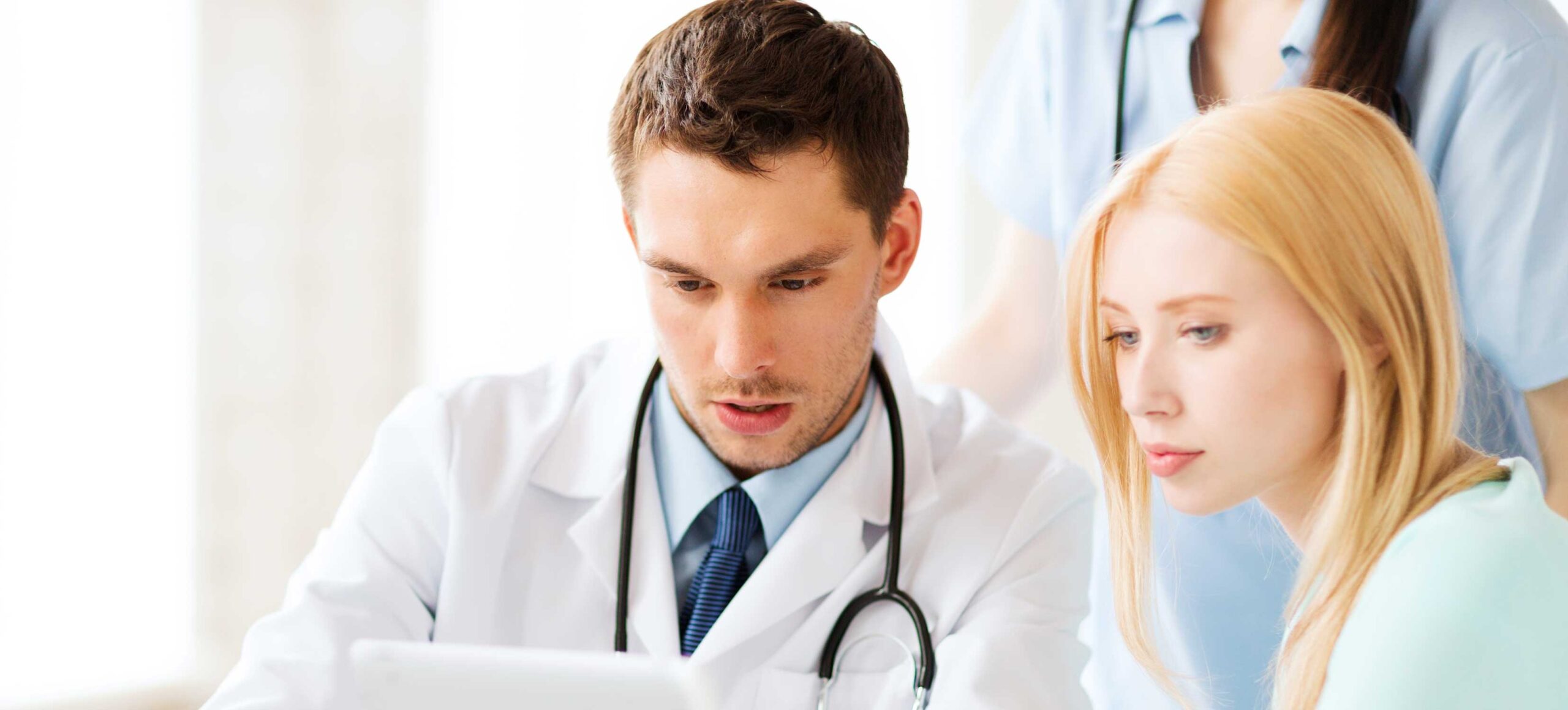Endometriosis and infertility at a glance
- Endometriosis, a disorder that often causes infertility, occurs when the tissue of the endometrium, which is the lining inside the uterus, is found outside the uterus instead.
- Endometrial tissue attaches to the outside of the uterus, the fallopian tubes, ovaries or other areas in the pelvic cavity.
- Like endometrial tissue inside the uterus, this misplaced tissue responds to the menstrual cycle but cannot be expelled from the body as happens when the thickened tissue inside the uterus is discharged through the vagina.
- This results in inflammation and scar tissue forming around the misplaced endometrial tissue, causing endometriosis symptoms of pain, infertility and abnormal bleeding.
- Women of reproductive age have the potential to have endometriosis, although the diagnosis isn’t often made till their 30s.
- Roughly 30% to 40% of women with endometriosis have trouble conceiving.
- Endometriosis treatments are hormone therapy and surgery, sometimes used together.
What causes endometriosis?
The endometrium is the tissue lining the uterine interior. Endometriosis occurs when this endometrial tissue spreads outside the uterus. These small pieces of misplaced tissue, also called endometrial lesions or implants, most often attach to the fallopian tubes, ovaries, the outside of the uterus and the lining of the pelvic cavity.
This misplaced tissue responds to a woman’s monthly cycle by thickening, breaking down and bleeding. Unlike normal uterine tissue and fluid, endometrial tissue growing outside the uterus cannot be discharged through the vagina during menstruation. This can result in scar tissue formation around the endometrial implants and inflammation.
One in 10 women of reproductive age experience this disorder. Doctors most often diagnose endometriosis in women in their 30s and 40s. Other risk factors include a heavy menstrual period, shorter monthly cycles, starting periods before age 11, and having a close family member with the disease.
Don’t let endo stop your family building
We can help, with expert evaluation, testing, diagnosis and treatments.
Endometriosis stages
Doctors recognize four stages of endometriosis, according to the Endometriosis Foundation of America. These are determined by several factors, such as the extent and location of endometrial tissue, the severity of adhesions and the existence and size of ovarian endometriomas (blood-filled cysts on the ovaries).
The four stages (I-IV) are minimal, mild, moderate and severe. Stages I and II are the most common, with mild adhesions (a form of healing after injury) and implants (tissue that grows and bleeds). Moderate and severe stages (III & IV) involve serious adhesions and blood-filled cysts (chocolate cysts). Infertility becomes more likely as the disease progresses, with stage IV endometriosis carrying the greatest likelihood of infertility.
Endometriosis and infertility
About 30% to 40% of women with endometriosis have problems conceiving. There are a number of ways the disease can affect fertility:
- Scarring or adhesions in the pelvis.
- The ovaries and fallopian tubes may not be in the right position, inhibiting the transfer of eggs to the fallopian tubes.
- Damage or blockage to the inside of the fallopian tube, impeding the journey of the egg down the fallopian tube to the uterus.
- The fallopian tubes and ovaries may adhere to the lining of the pelvis or to each other, restricting their movement.
- Endocrine and ovulatory abnormalities, such as over-production of prostaglandins, hormones that play an important role in the fertilization and implantation of the embryo.
- Altered hormonal and cell function.
- The body’s natural inflammatory response to this “misplaced tissue” can result in the production of factors that inhibit fertility.
- In women with endometriosis, the endometrium (inside the uterus) have been shown to differ from women without endometriosis.
- Impaired implantation of an embryo in the uterus; some of these bio chemical differences can lead to impaired implantation.
Women with endometriosis can usually still conceive and carry a child, although some may need assistance through reproductive medicine, such as in vitro fertilization (IVF).
Recognizing endometriosis symptoms
Endometriosis symptoms are not always present for many women who have the disease. These women may find out they have the condition when they see a doctor after having trouble conceiving.
When symptoms are present, the most common are chronic pelvic pain, heavy menstrual bleeding and infertility. Chronic pelvic pain can be greater during menstruation or when having intercourse.
The location of endometrial lesions or adhesions can affect symptoms. This can mean pain during bowel movements or when urinating.
Endometriosis diagnosis
Regardless of symptoms, an accurate endometriosis diagnosis is important. Even mild cases of endometriosis can affect fertility.
An OB-GYN or a fertility specialist may suspect the disease from pelvic or ultrasound exams, but the only way to definitively diagnose the disease is with direct inspection via laparoscopy.
Laparoscopy is a minimally invasive surgery where the surgeon inserts through a small incision in the lower abdomen a laparoscope, which is a telescope-like instrument with a light and camera. The surgeon views the pelvic area on an external monitor and can take a sample biopsy for further confirmation.
During this diagnostic laparoscopy, the surgeon can also treat the disease using special instruments inserted through the small incisions.
Treating endometriosis
Treatment plans depend on the patient’s primary complaint and whether they are they primarily seeking pain relief or reproductive assistance for infertility.
Treatment for pain can include a blend of lifestyle changes, medication, hormone therapy and/or surgery. For pain symptoms from mild or moderate endometriosis, over-the-counter pain relievers like ibuprofen (Motrin/Advil), aspirin and acetaminophen (Tylenol) can help. Stronger prescription pain medication may be needed.
Exercise, acupuncture, meditation and biofeedback also give some women additional relief from symptoms.
Hormone therapy medications can address pain by stopping ovulation temporarily. This includes using oral contraceptives (estrogen and/or progestins), GnRH agonists and danazol. This approach can stop new implants from developing and shrink existing lesions.
Unfortunately, hormone therapy isn’t a cure for endometriosis, which tends to return when most women cease the therapy.
For some, surgery is a good option. A surgeon can remove endometrial implants and scar tissue by surgery, cauterization (burning) or vaporizing them with a laser. Usually a surgeon does this through laparoscopy as mentioned above, minimizing the effects of surgery, including less pain and recovery time.
In severe cases or if laparoscopy can’t easily reach the endometrial implants, the surgeon may perform a laparotomy. This is a more extensive surgery that requires a larger incision of about four to five inches.
Those with severe cases who are not planning a pregnancy may be advised to have a hysterectomy and removal of the ovaries (called an oophorectomy).
When treating infertility symptoms endometrial implants with hormone therapy and/or surgical removal may help temporarily relieve symptoms and may make pregnancy possible. There is a balance between preserving ovarian function and trying to remove the endo that has to be taken into account.
How to prevent endometriosis
Researchers are working hard to determine the causes of endometriosis. For now, the most popular theory is that there may be three possible sources that make a woman more likely to have endometriosis: their genetics, immunological disorders, and dioxin or organochlorine exposure.
If you think you might have endometriosis or you’ve already been diagnosed, and you want to start or grow your family, you should seek the help and support of an infertility specialist. There are many endometriosis groups online that offer support to women going through the same experiences.

